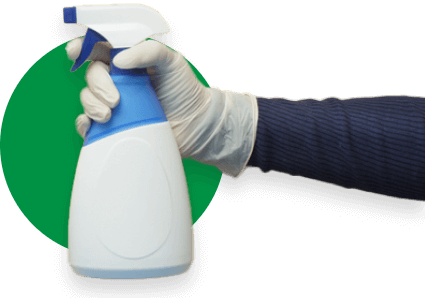The sticky floors. The popcorn crumbs. That smell. Suppose you’ve just dealt with the aftermath of a packed kids’ matinee or had your theater trashed after a raucous Friday night premiere. In that case, you already know how fast a sparkling clean theater can become sticky and stinky, and the importance of proper movie theater cleaning.
Since 2006, Dallas Janitorial Services has experience cleaning the inside of hundreds of movie theaters. Customers have called us after complaints, corporations have scheduled us before audits, and theaters have relied on us during the summer blockbuster rush. Learn more about our commercial cleaning services tailored for theaters.
What we’ve learned over the years as commercial cleaners is simple: if you want people to come back, you better give them a clean place to sit. Clean theaters aren’t just about looking good; they’re about staying competitive in a world where people can wait for a theatrical stream date.
Let’s walk through how to keep your theater spotless, sane, and safe without putting in painful overtime.
Why Cleanliness Matters in Movie Theaters
Let’s be honest, people notice the bad before they appreciate the good. You can have perfect sound, flawless projection, and recliners that offer hours of comfort for guests, but if the armrest is sticky, that’s all they’ll remember.
Movie theater cleanliness isn’t just about hygiene. It’s about business. Guests who encounter overflowing trash cans or smelly restrooms will likely turn around and leave a one-star review on Google. The worst part is that not only do reviews linger, but if a viewer leaves a bad Google review, you can bet they won’t be back to spend money at your theater.
Today’s moviegoer expects more. Since the pandemic, people have raised the bar on what “clean” means. They’re not being picky, they’re being careful, and they’ve got options. If your theater feels unkempt or unclean, they’ll skip the trip and stream it.
If you manage multiple theaters, you’re not just dealing with a cleaning issue; you’re managing a perception problem. Dallas Janitorial can transform your movie theater cleaning experience with our custom cleaning plans.
6 Key Areas In a Movie Theater That Require Regular Cleaning
No two theaters are the same, but a few areas always need attention. If you let them slide, the following spots in your movie theater are deal-breakers regarding cleanliness.
1. Auditorium Seating & Armrests
Yes, you aren’t imagining it—movies are getting longer, with the average length at over 2 hours. That means your guests spend a lot of time in those seats. It leaves a lasting negative impression if they find sticky armrests, spilled soda underfoot, or popcorn remnants from the last showing.
Auditorium seating and armrests should be cleaned before every show. A quick vacuum of the area, followed by disinfectant wipes on armrests, cup holders, and seat backs, is non-negotiable. Don’t forget the spaces between seats; those hidden crumbs and wrappers add up fast.
For theaters with recliners or premium seating, go the extra mile with leather-safe cleaners or fabric sanitization as needed. Consistency is key, and working with professional theater cleaning services can ensure each auditorium is show-ready every time the lights dim.
2. Aisles, Walls, and Flooring
High-traffic areas like aisles and entryways take a beating throughout the day. One dropped soda or stray piece of trash can snowball into a bigger mess, and guests will notice. Dirty or sticky floors don’t look bad, they create safety hazards that could lead to slips or falls.
Maintaining these spaces means prioritizing cleaning high-traffic floors after every showing. This includes sweeping and spot-mopping under seats, in walkways, and near exits. Even minor spills should be addressed immediately to prevent build-up.
Walls and baseboards can collect scuff marks, handprints, or shoe residue, especially during sold-out weekends. Wipe them down daily to keep things looking polished.
Schedule weekly deep cleanings, such as carpet extraction or floor buffing, to maintain a fresh, professional appearance. A clean, well-lit aisle isn’t just a nice touch; it signals that your theater is managed with care and attention to detail.
3. Concession Areas
Many movie theater concession areas have a DIY model added to them, satisfying audiences by letting them get their popcorn and soda. However, this is a recipe for a mess. Butter dispensers, soda fountains, and nacho stations are magnets for grime. Clean these nightly, focusing on food-safe sanitization and grease control. A concession stand cleaning checklist can help speed up your tasks and ensure your team doesn’t miss a spot.
4. Restrooms
Nothing tanks a review like a gross bathroom. Your guests may overlook a popcorn kernel on the floor, but a dirty restroom? That sticks with them, and it shows up in online reviews.
Daily deep cleaning is essential here, and it’s not just about refilling toilet paper and soap. Restroom cleaning should include sanitizing all surfaces, especially touchpoints like door handles, faucet knobs, and flush levers. Floors should be mopped with disinfectant, and trash bins must be emptied frequently to prevent odor buildup.
Consider assigning restroom check-ins every hour during peak times to keep things in shape. A visible movie theater cleaning schedule can signal to guests that you take hygiene seriously.
5. Lobbies and Ticket Counters
First impressions matter. Even if ticket sales are digital, your lobby sets the stage for what guests expect. Smudged windows, dusty movie posters, or cluttered counters can make even the nicest theater feel outdated or neglected.
Sweep and mop the floors regularly, especially on rainy days or high-traffic weekends. Clean fingerprints off glass doors, ticket kiosks, and display cases. Wipe down countertops, vacuum rugs, and polish chrome or metallic fixtures to keep them shining.
Remember promotional displays, digital signage, and merchandise tables; those need attention, too. A tidy, polished lobby encourages guests to grab concessions, buy gift cards, and return for another show.
6. Back-of-House and Break Rooms
Your guests might never see the break room or behind-the-scenes areas, but they’ll feel the impact if those spaces are neglected. A clean and organized employee area contributes to a smoother operation and sets a tone of professionalism.
Daily responsibilities should include wiping down shared surfaces, cleaning appliances (like microwaves and refrigerators), and emptying trash bins. Once a week, thoroughly clean storage shelves, locker areas, and staff restrooms.
Also, consider enforcing “clean as you go” policies for staff. When the backstage environment is respected, employees take more pride in their work, and that mindset carries over to guest-facing tasks.
4 Movie Theater Cleaning Challenges and How to Overcome Them
1. Cleaning Between Showtimes
Before each movie showing, your team must swiftly and efficiently prepare the theater for the incoming audience in a focused 10-minute effort. Equip your cleaning crew with cordless vacuums for rapid floor cleaning. Ensure they have easily accessible, pre-filled cleaning kits containing essential supplies like sanitizing wipes, all-purpose cleaner, and microfiber cloths.
This strategic preparation allows for a quick and thorough sweep of debris, effectively wiping down armrests, cup holders, and any other potentially soiled surfaces. It also completely resets the seating area, ensuring a clean and welcoming environment for every guest. All this is accomplished without causing any delays to the movie schedule.
2. Weekend Rush
Friday and Saturday nights see the highest volume of patrons at movie theaters, necessitating increased staffing across all departments, not just at the concession stands. A strategic overlap in cleaning crew schedules is crucial to maintaining a clean and pleasant environment for moviegoers throughout these peak times.
This overlap ensures continuous cleaning and quick turnaround times between screenings, particularly in high-traffic areas like auditoriums, lobbies, and restrooms. A comprehensive concession stand cleaning checklist can further streamline the cleaning process, ensuring all necessary tasks are completed efficiently and consistently.
Our team specializes in helping movie theater management optimize their cleaning protocols and staffing schedules to enhance the overall customer experience and maintain a high standard of cleanliness. By focusing on efficient cleaning strategies, including staff overlap and detailed checklists, theaters can effectively manage the increased demands of weekend crowds and ensure a positive and welcoming atmosphere for all guests.
3. Odor Control
Closed movie theater auditoriums can develop unpleasant, musty odors due to stagnant air and residual moisture. Rather than masking these smells with floral or other scented cover-ups, which often fail to address the underlying issue and can irritate patrons, it is crucial to implement a comprehensive odor neutralization strategy. This involves utilizing specialized neutralizing cleaning products to eliminate odor-causing molecules at their source. Furthermore, ensuring proper airflow within the auditoriums is essential in preventing the buildup of humidity and stale air.
This can be achieved through ventilation systems or by opening doors and allowing air circulation between showings, weather permitting. The ultimate goal is to leave the theaters with a genuinely fresh and clean scent after every showing, enhancing the overall movie-going experience for customers.
4. Pest Control
Neglecting a discarded candy container beneath a seat in Row J can lead to pest infestations, drawing unwelcome creatures such as cockroaches, rats, and mice. Establishing and diligently following comprehensive daily closing procedures is essential for effective pest prevention. These protocols must include a thorough sweep under all seating areas to remove any dropped food, wrappers, or other debris. Furthermore, promptly removing all collected trash from the premises is critical in maintaining a clean and pest-free environment within the theater. Consistent adherence to these practices will significantly minimize the risk of attracting pests and help ensure a pleasant experience for moviegoers.
Top Cleaning Products for Movie Theaters
We equip our teams with specialized tools and high-quality products to ensure thorough and efficient cleaning in your theater environment. We understand that the right equipment saves time and effort and contributes to a higher standard of cleanliness and a better guest experience.
Here’s a closer look at what theater cleaning services we bring to each location:
Low-Noise Vacuums Built for Tight Theater Rows
Traditional vacuums can be cumbersome and disruptive, especially when cleaning between showtimes. Low-noise vacuums are specifically designed with a slim profile, making them easy to navigate the tight spaces between theater seats. The quiet operation minimizes disruption to guests and staff, allowing for cleaning during operating hours if needed for quick touch-ups without disturbing anyone. These vacuums often feature powerful suction and specialized attachments to remove popcorn, crumbs, and other debris from carpets and upholstery in those hard-to-reach areas.
Steam Cleaners for Fabric and Hard Surfaces
Steam cleaning offers a powerful and chemical-free way to sanitize and deep clean various surfaces in a movie theater. For fabric surfaces like upholstery, steam effectively lifts stains and kills bacteria and allergens embedded in the fibers. Steam cleaners can cut through grease and grime on hard surfaces like tile and sealed concrete, leaving them sparkling clean and sanitized, without harsh chemicals.
Microfiber Cloth Systems to Prevent Cross-Contamination
Cross-contamination is a significant concern in any public space. A color-coded microfiber cloth system is crucial in preventing germs from spreading. Different colored cloths are designated for specific areas (e.g., restrooms, seating, concession areas), ensuring that the fabric used to clean a potentially contaminated surface is never used in a guest-facing or food-handling area. This system streamlines the cleaning process while upholding the highest hygiene standards.
Movie Theater Cleaning You Can Trust With Dallas Janitorial Services
Dallas Janitorial Services is committed to using environmentally responsible cleaning solutions that are safe for your guests and staff. These “green” products effectively clean and disinfect without leaving harsh chemical residues or strong odors.
We firmly believe investing in the right tools and products is essential for efficiency. Cutting corners on equipment or using subpar cleaning supplies can lead to longer cleaning times, less effective results, and potentially compromised guests’ and staff’s health and safety. Our approach focuses on equipping our teams with the best resources to get the job done right first, saving you time, money, and headaches in the long run.
At Dallas Janitorial Services, we’ve been helping theaters like yours stay clean, safe, and ready for guests for nearly two decades. We know what’s at stake. And we show up every time.
Let’s keep your theater spotless. Get a custom quote for expert movie theater cleaning today.
Movie Theater Cleaning FAQs
How much does it cost to clean a movie theater?
The cost depends on the theater’s size, number of auditoriums, and cleaning frequency. Larger venues or those with daily service will see higher rates. However, theaters with multiple locations or long-term contracts often benefit from discounted or bundled pricing.
How do you clean a movie theater?
Proper cleaning includes vacuuming, wiping down seats and surfaces, sanitizing the concession area, disinfecting restrooms, and removing trash, all done daily. Deep cleaning rotates weekly or monthly.
How long does it take to clean a movie theater?
Quick turnarounds between showings typically take about 10 to 20 minutes, focusing on spot cleaning like clearing trash, wiping down seats, and checking restrooms. A full deep clean, often done overnight, can take anywhere from 1 to 3 hours, depending on the theater’s number of auditoriums and the amount of traffic it saw that day. Larger venues with multiple screens may require more time to prepare everything for the next day’s audience.







